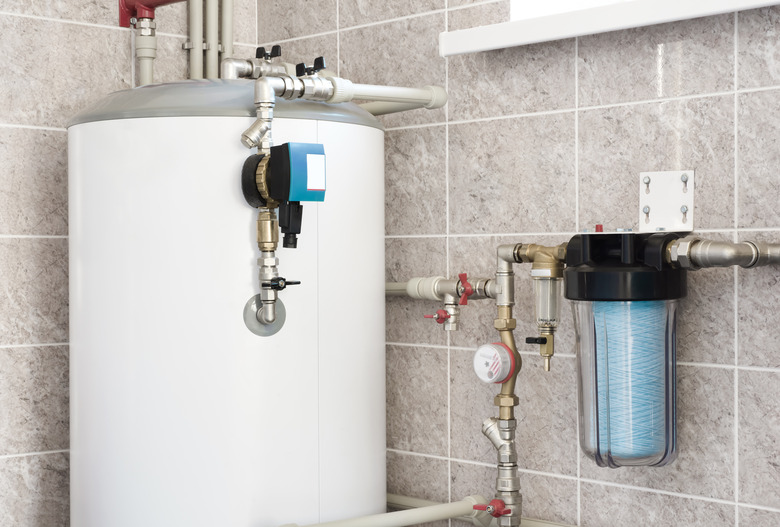How To Move A Hot Water Heater On Its Side
We may receive a commission on purchases made from links.
It is time for a new water heater, and the salesperson suggests having your water heater delivered at an additional fee or you will void the warranty. Salespeople may also say that there are internal components that can be damaged if the water heater is transported horizontally. Truth be told, carefully transporting the new water heater on its side does not void the warranty and can be accomplished with some caution.
Reasons for Concern
Reasons for Concern
Water heaters have internal components. Most water heaters have glass linings, and moving one in any position requires special care. Some internal parts, such as the dip tube (the plastic tube that forces water to the bottom of the tank, located on the cold water inlet piping), are not supported horizontally.
Another internal component is the anode rod, a sacrificial, soft metallic rod that protects the tank from corrosion. This rod is often mounted vertically and can also be damaged during transport.
Other concerns depend on the type of water heater you are moving. Electric water heaters have heating elements, gas water heaters have pilots and controls that need to be considered, and oil-fired water heaters have fireboxes and controls as well. The newer hybrid (heat pump) water heaters have built-in refrigeration systems, and transporting them horizontally can cause issues.
Things Needed
How to Move a New Water Heater
1. Measure the Box
To assure that your new water heater is going to fit in your vehicle, measure the space in the vehicle. Moving the water heater in its factory box will help secure all the vital components during the move. This is the time to make the decision whether to have it delivered or transport it home yourself.
2. Move It to the Vehicle
With a hand truck and an extra pair of hands, move the water heater to the vehicle you are using to transport it home.
3. Secure the Load
Making sure the water heater does not move while transporting it is essential. For instance, if you are transporting it in an SUV, you will want to keep the water heater flat. Many SUV folding seats do not lie completely flat.
Check that the water heater is shored up and lying flat, using moving blankets or boards to support the tank. Another consideration no matter what type of vehicle you are using is to secure it so it doesn't move around. This is another reason to keep it in the factory box.
4. Choose the Right Path Home
Select the route home that has the fewest potholes. This helps prevents the tank and its internal components from being jostled.
5. Remove the Water Heater From the Vehicle
Once you arrive at the final destination, have the hand truck ready and remove the water heater from the vehicle the same way you got it in. Be sure to have an extra pair of hands for this. Water heaters can be heavy.
6. Check for Damage
Check the water heater and look for any obvious damage before getting too far from the vehicle. This might save you an extra trip in and out of the house while carrying a heavy load.
7. Put It in Position
Once you bring the water heater inside, get it into the location necessary for the installation per the manufacturer's instructions and your local plumbing code.
Moving a Used Water Heater
Moving a Used Water Heater
If you are moving a used water heater from another location, you'll need to follow the same steps and precautions, but you'll also need to remove water from the unit using a pump and hose. Ensure that the gas, oil, or electricity is shut off, depending on the type of water heater you are moving. Always follow safe practices while working with any type of energy.
